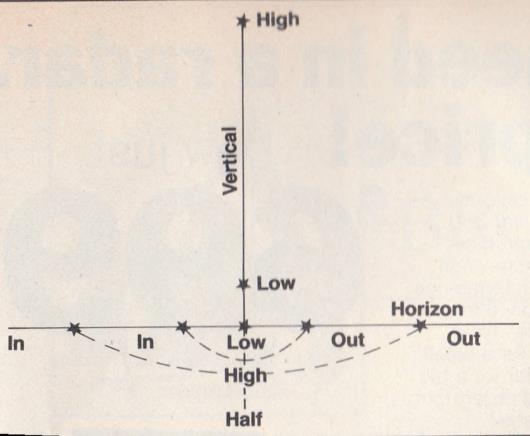
NavList:
A Community Devoted to the Preservation and Practice of Celestial Navigation and Other Methods of Traditional Wayfinding
Re: 9471
From: Byron Franklin
Date: 2009 Sep 28, 09:23 -0700
From: Byron Franklin
Date: 2009 Sep 28, 09:23 -0700
The Vertical Sextant. This tip will enable even the inexperienced celestial navigator to plot celestial (pinwheels on the chart by using a simple sextant technique. In 1958, 1 was stationed on a Liberty ship of World War II vintage. For months at a time for five years, the ship was under way approximately 200 miles off the East Coast Using Loran ?A? and the sextant to maintain radar, air craft and missile tracking station. The duty was a pleasure for a celestial navigation nut like myself because in any month I observed, computed, plotted and evaluated an average of 20 morning and evening star fixes, plus countless sun lines. The best fixes were always when the horizon was fully lit, toward the day side of twilight. Once the stars became bright, the horizon would darken and become a thick band. The best plan was to sight while the stars were just showing, bring the star to the sharp horizon, swing the star (rock the sextant), and lay the star on the horizon. Many times, especially with a high star, the star would disappear on or near the well-lit horizon. The sky just above the horizon is lighter than the rest of the sky and the swinging takes away some of the concentration needed to stay locked onto the faint star or the pale disk of a planet. In order to sit that faint star on the distinct horizon, I experimented with bringing the faint star into the relatively darker water and rocking the sextant, watching the star enter and leave (in and out) the water. I found that I could quickly isolate the exact point under the star ?Vertical Sextant,? be it high or low. I could concentrate on putting the star on the horizon by halving the ?in and out? mentally and bringing the star above that point on the horizon and then coming down for the mark. It worked so well for me that I started using the same procedure for the sun and bright stars. Very accurate fixes were easy. I admit that my celestial fixes were not so accurate after a transfer to duty with less demanding celestial navigation practice. When I shifted back to ?Vertical Sextant? (in and out of the water), my fixes would improve and tighten with no random near misses. Give the technique a good try. Byron Franklin Newport, Rhode Island. --~--~---------~--~----~------------~-------~--~----~ NavList message boards: www.fer3.com/arc Or post by email to: NavList@fer3.com To , email NavList-@fer3.com -~----------~----~----~----~------~----~------~--~---







